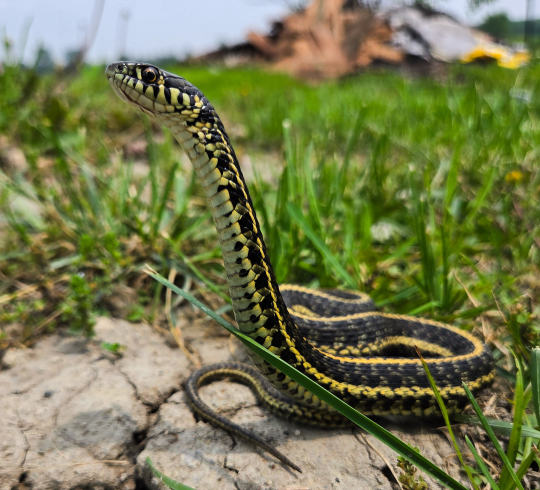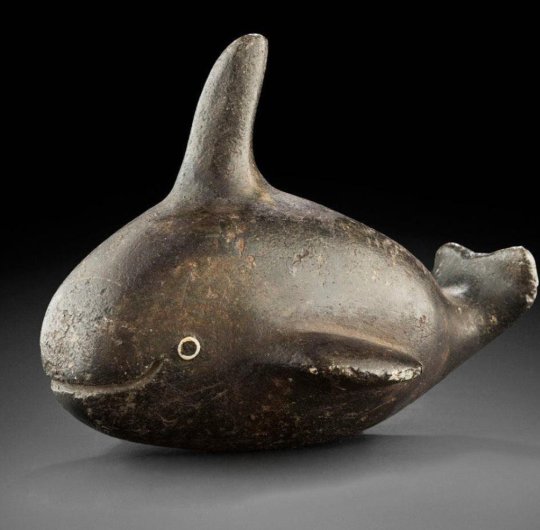I am too old to merely play, too young to be without desire. - Goethe, Faust
Don't wanna be here? Send us removal request.
Text

Plains Garter Snake (Thamnophis radix), family Colubridae, OH, USA
photograph by Adrian Bara-Popa
383 notes
·
View notes
Text
when things are already pretty horsey but then the situation

4K notes
·
View notes
Text
he'll eat me alive one of these days 🤍 yay
45 notes
·
View notes
Text



In 3807 BC, the Neolithic Britons of the Brue Valley came together to construct an elevated, single-plank walkway over a reed swamp. Stretching nearly two kilometres, it would have provided a vital link for communities on the Somerset Levels, and is the second-oldest timber trackway discovered in the British Isles.


The track was a walkway consisting mainly of planks of oak laid end-to-end, supported by crossed pegs of ash, oak, and lime, driven into the underlying peat; the length, straightness, and lack of forks or branches in the pegs suggest that they were taken from coppiced woodland—one that they appear to have been managing for at least 120 years.
The total timber used in the track’s construction weighed approximately 200,000 kilograms, yet estimates suggest just ten men could have assembled it in just one day. The track was operational for only about ten years before rising water levels likely submerged and rendered it unusable.
6K notes
·
View notes
Text
they would NOT fucking have communication skills that good
130K notes
·
View notes
Text


Ghost Glass Frog (Sachatamia ilex), family Centrolenidae, Costa Rica
photograph by Igor Sarmientos Melgar
1K notes
·
View notes
Text
Enamored by this picture of a legless lizard from georgian reptile fb group

18K notes
·
View notes
Text
The reading comprehension and overall common sense on this website is piss poor.
1M notes
·
View notes
Text
Everyone shut up and look at this carving of a whale from the 1200-600 CE Chumash culture

83K notes
·
View notes
Text
Small shaggy horses adapted to harshly cold climates are so woefully neglected in historical/fantasy media
18K notes
·
View notes
Text














Росянковый вечер. Фотограф Юлия Втюрина. Россия (Санкт-Петербург).
Sundew evening. Photographer Julia Vtyurina. Russia (Saint Petersburg).
Росянка (Drosera) – это род хищных растений, принадлежащий к семейству Росянковые (Droseraceae). Существует около 200 видов росянок, которые распространены по всему миру, включая Австралию, Южную Америку, Северную Америку, Европу и Азию. Эти растения известны своим уникальным жизненным циклом и способностью ловить и переваривать насекомых с помощью специализированных листьев, покрытых клейкими железками. Росянки обитают преимущественно на болотах, торфяниках и влажных лугах, где почвы бедны питательными веществами.
Происходит от русского слова "роса", что связано с капельками жидкости, которые выделяются на концах волосков растения и напоминают росу. Латинское название рода - Drosera, происходит от греческого слова "drosos", что также означает "роса". В Средние века росянку считали магическим растением. Считалось, что она может защитить от злых духов и принести удачу. Росянку использовали в различных ритуалах и обрядах, связанных с любовной магией и предсказаниями. В настоящее время росянка используется в гомеопатии и фитотерапии. Её экстракты входят в состав некоторых препаратов для лечения респираторных заболеваний.
Sundew (Drosera) is a genus of predatory plants belonging to the family of sundew plants (Droseraceae). There are about 200 species of sundew that are distributed all over the world, including Australia, South America, North America, Europe and Asia. These plants are known for their unique life cycle and the ability to trap and digest insects with the help of specialized leaves covered with adhesive glands. Sundew plants live mainly in swamps, peat bogs and wet meadows, where the soils are poor in nutrients.
It comes from the Russian word "dew", which is associated with droplets of liquid that stand out at the ends of the hairs of the plant and resemble dew. The Latin name of the genus is Drosera, which comes from the Greek word "drosos", which also means "dew". In the Middle Ages, sundew was considered a magical plant. It was believed that it could protect against evil spirits and bring good luck. Sundew was used in various rituals and rituals related to love magic and divination. Currently, sundew is used in homeopathy and herbal medicine. Its extracts are included in some medications for the treatment of respiratory diseases.
Источник:://35photo.pro/edhel, ://35photo.pro/tags/росянка/, /zhoozhavil.ru/novosti/rasteniya/komnatnye/rosyanka-ru/rosyanka/.
101 notes
·
View notes
Text
man i have GOT to do this thing. *doesnt do it*
74K notes
·
View notes
Text

Year of the Snake 🐍 Happy Lunar New Year! 🌞
13K notes
·
View notes

